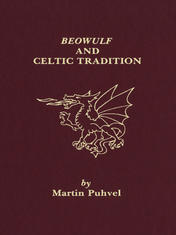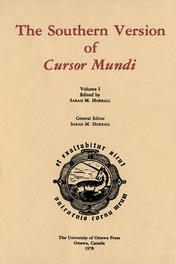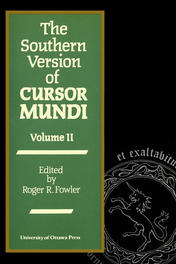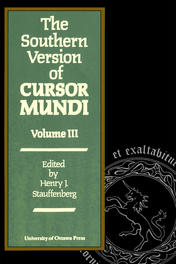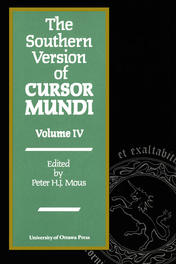Medieval
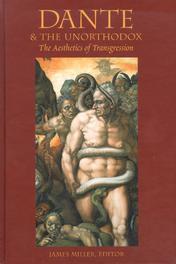
Excerpts from Dante & the Unorthodox: The Aesthetics of Transgression edited by James Miller
From Introduction: Retheologizing Dante by James Miller
Credenza
In keeping with the spirit of oltraggio [excess], the project of this volume is to discover just how far Dante was willing to push his faith beyond the doctrinal limits of the Catholic Church, and why his theological impulse to expand his belief is aesthetically important for the Commedia. One of his key words for faith, credenza, is especially pertinent to this project because it implies a restless impulse to judge the social value of beliefs and to test the strength of a culture's confidence in prevailing belief systems by comparison with rejected religions and philosophies. It is the term favoured by St. Peter himself, who uses it in the Heaven of the Fixed Stars during his examination of Dante's faith [a la credenza tua s'offerse: “it was offered to your belief”] (Par. 24. 123). Even Virgil, despite his lack of “the true faith” [la vera credenza] (Purg. 22. 77), uses the word at a crucial testing moment. Noticing Dante's reluctance to believe that the flames of Mount Purgatory will do him no harm, the Roman poet suggests that the pilgrim hold the hem of his garment in the fire and “find out for [him]self” [fatti far credenza] (Purg. 27. 29-30). In Dante's universe you don't simply “have” faith. You make it. All the motions in the universe impel you to test it out creatively and to create it in the testing--far credenza--which in turn validates your testimony of its universality, its true “catholicism. ”
In modern Italian, as in modern English, “credenza” has come to mean a side table where various foods are placed so that they may be sampled before being served. This is not Dante's meaning, of course, but it suggests an allegorical image for the Commedia by recalling the banqueting table of the Convivio (1. 1. 10-13) where he spread out all his philosophical knowledge for the reader to sample. 6 In the Sacred Poem his beliefs expand beyond the limited classical fare on his earlier philosophical menu. His banquet is now spread out upon “the table of love” [la mensa d'amor] (Purg. 13. 27), a credenza for the sacramental “bread of angels” [pan de li angeli] (Par. 2. 11). The “outraging” pressures of Dante's expansive new faith bear upon all traditional systems of belief, including the Roman Catholicism of his youth and the Roman philosophy of his political heyday and early exile. Sustained by an anagogic fantasy of his own orthodoxy, he is determined to make belief through make-believe. It is a potentially heretical strategy, and his transgressive reliance on the imagination as well as the intellect to far credenza in the reader will become an issue of major concern among the earliest commentators on the poem. Dante studies takes its start, not surprisingly, from a defence of his orthodoxy.
Reflecting on the outrageousness of his mission to recreate his church and his world in the image of his poem, I have labelled each of the six parts of Dante & the Unorthodox with an Italian infinitive drawn from the rich vocabulary of transgression and transcendence in the Commedia. Each infinitive is a compound of the prefix tra- or its variant tras-, from the Latin preposition trans signifying “over” or “across”, plus a root verb denoting a crossover movement or a crucial change of state.
Part 1 (Trapassar) “steps over” the threshold separating the living from the dead by following Dante into the Inferno to reflect on his initial encounters with the Unorthodox. Part 2 (Trasmutar) examines how the Damned “change over” from one shape to another to reveal the moral and psychosexual effects of their unorthodoxy. Part 3 (Trasumanar) follows Dante's struggle “to pass beyond the human” by considering Purgatory and Paradise as controversial zones where the prevailing orthodoxy of the Roman Church is both sustained and challenged by the souls in Gods favour.
Though theological source-studies of trasumanar have been done by Singleton, Freccero, and, most recently, Botterill, 7 the transgressive implications of this most famous of Dante's tra- verbs have yet to be considered. Since the poet audaciously invented trasumanar to express the newness of his own unique experience in entering into all ten spheres of Paradise, it might well mean more than the traditional anagogic gloss suggests (i. e. , “divinization of fallen human nature during beatification”). Why construe it only as a synonym for various Latin theological terms relating to mystical experiences recorded in the Bible? Its significance must exceed the meaning of St. Paul's “being caught up”, for instance, since the Apostle only experienced the mysteries of the third heaven. Reflecting on Dante's Ovidian as well as Bernardian fascination with the visionary presence of “our image” [la nostra effige] (Par. 33. 131) in the second circle of the Trinity, I suggest in part 3 that trasumanar might also mean the “carrying over of the human into the divine”--a distinctively cosmopoetic as well as incarnational transgression of the pagan ontological divide between humanity and divinity.
Part 4 (Traslatar) “translates” Dante both literally and figuratively by considering how the resonance of the Sacred Poem “carries across” the language barrier between Italian and English and across the centuries between the medieval and modern periods. Just as the spirits in the Heavenly Eagle look back to David, “the singer of the Holy Ghost, who bore the ark about from town to town” [il cantor de lo Spirito Santo, / che l'arca traslatò di villa in villa] (Par. 20. 38-9), so the authors in part 4 look back to Ezra Pound, the singer of The Cantos, who bore “Dantescan Light” from town to town in America and Europe during his long unorthodox career. Dante and Pound combine their influences in part 5 (Tralucere), which “projects light across” the chasm between the verbal and visual arts to reveal the impact of the Commedia and The Cantos on filmmaking in the second half of the twentieth century. Implicit in Dante's luminous journey through Paradise is an aesthetic adaptation to the divine delight in spilling over or bursting through all measures of beauty and wisdom. In light of this, part 6 (Trasmodar) “exceeds the limits” of text by passing entirely into the domain of the visual arts to contemplate the Dantean origins of the interarts rivalry in post-medieval aesthetics. .. .
NOTES:
6. Dante's word for “table” in this introductory passage is mensa. Though the food we are to feast upon is philosophical, he describes the table as “blessed” [beata] (Conv. 1. 1. 10) because those who are invited to dine at the banquet are eager to attain the beata vita or “happy life. ”
7. See the gloss on Par. 1. 70 in Singleton (1975), 18; Freccero (1986), 20920; and the extensive discussion of Bernard's comparable term deificari in chapter 6 of Botterill (1994).
From PART I TRAPASSAR Dante's Limbo: At the Margins of Orthodoxy by Amilcare A. Iannucci
Within Dante's Limbo a separate area is reserved for the great-hearted pagans of the past, the magnanimi, who live in a “noble castle” [nobile castello] (Inf. 4. 106) illuminated by a fire which “wins out” against the prevailing darkness of Hell [un foco / ch'emisperio di tenebre vincia] (Inf. 4. 68-9). Surrounding the castle for defence are “lofty walls” and a “fair stream” [alte mura. .. bel fiumicello] (Inf. 4. 107-8). Within, “on a meadow of green flowering plants” [in prato di fresca verdura] (Inf. 4. 111), these same magnanimi, their faces “grave” and their speech “gentle” and infrequent [con occhi tardi e gravi. .. parlavan rado, con voci soavi] (Inf. 4. 112-14), are left free to discuss their affairs and to pursue the intellectual values they espoused while alive.
The above picture of Limbo, although possessed of great poetic beauty and intensity, nevertheless caused from a theological perspective deep shock and embarrassment to Dante's early commentators, as Pietro di Dante, Guido da Pisa, and Boccaccio attest. 2 They realized how utterly unorthodox Dante's Limbo was and tried to defend him by maintaining that he was speaking poetically and not theologically, as Guido da Pisa explicitly states. 3 Moreover, they also tried to distance themselves from Dante's unorthodox portrayal of Limbo by pledging their allegiance to the true Faith. The Church, too, reacted to Dante's dangerous theological readings, 4 and in a far less understanding manner: provincial chapters repeatedly banned Dante's Commedia from their curricula, as the Dominicans did in 1335. 5
Perhaps the most insightful theological condemnation of Dante's theology of Limbo is provided by the fifteenth-century churchman, St. Antoninus. 6 A Dominican scholar of the Pierozzi family of Florence and a distinguished ecclesiastic who rose to the rank of adjutor of the Rota, Antoninus (1389-1459) was named Archbishop of Florence in 1446 by Pope Eugenius IV on the suggestion of Antoninus's former fellow classmate, Fra Angelico. A pastoral bishop of the top sort, Antoninus was also a most prolific writer. Among his many works are handbooks for confessors such as the Confessionale and the Medicine of the Soul; a guide for penitents, the Mirror of Conscience; a short spiritual treatise entitled a Guide to Good Living; and a compendium of moral theology, the Summa theologiae moralis. But the work of most significance for Dante's portrayal of Limbo is the Chronicon. Composed sometime between 1440 and 1459, this immensely popular work--it was reprinted seventeen times between 1484 and 1586--contains a veritable history of the world in which both sin and virtue are key players.
Here Antoninus not only speaks of Dante's political turmoil and the reasons for it, but also takes Dante to task for his theological rendering of Limbo, a rendering which for Antoninus is dangerously unorthodox because it cannot be defended by an appeal to Dante's poetic licence. Since the Commedia was written for and read by the vernacular masses, an audience, therefore, who were theologically unsophisticated (Antoninus uses the uncharitable term idiotis [idiots]), 7 they were likely to be led away from the articles of the true Faith by Dante's version of Limbo. 8
What, then, is the basis of all this theological concern centring on Dante's Limbo, especially that of Antoninus? Before addressing (for the purpose of answering) the theological objections of the goodly Archbishop, it is first of all necessary to review the orthodox picture of Limbo held by theologians of Dante's time and to explore how Dante's depiction of Limbo did or did not conform to it.
NOTES:
2. Both Pietro (gloss to Inf. 4. 1) and Guido (gloss to Inf. 4. 79) ascribe Dante's novel portrayal of Limbo to poetic licence while Boccaccio (Esposizione allegorica, scs. 16-49), after noting the level of criticism provoked by Limbo's lack of orthodoxy and attempting a weak defence in its support, ends by pledging his allegiance to the truth of the Catholic Faith concerning the doctrine of Limbo.
3. Guido da Pisa, gloss to Inf. 4. 79.
4. Equally suspect in the eyes of the Church were the political views of Dante as expressed in the Monarchia. Cf. Vernani's Tractatus de reprobatione compositae a Dante.
5. See Kaeppeli and Dondaine (1941), 286. Cf. Foster (1977), 65.
6. On Antoninus, see Ricci (1970). The best sources for his life are Walker (1933), Jarrett (1914), and Castiglione (1680).
7. The word idiotae is a technical term to describe the illiterate or illitterati. Cf. Ahern (1997), 217-18.
8. Cf. Chronicon, Part 3, tit. 21, chap. 5, para. 2, c. 306, 2b.
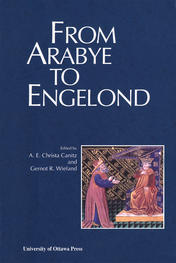
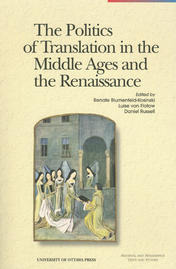
No translation is an innocent, transparent rendering of the original.


